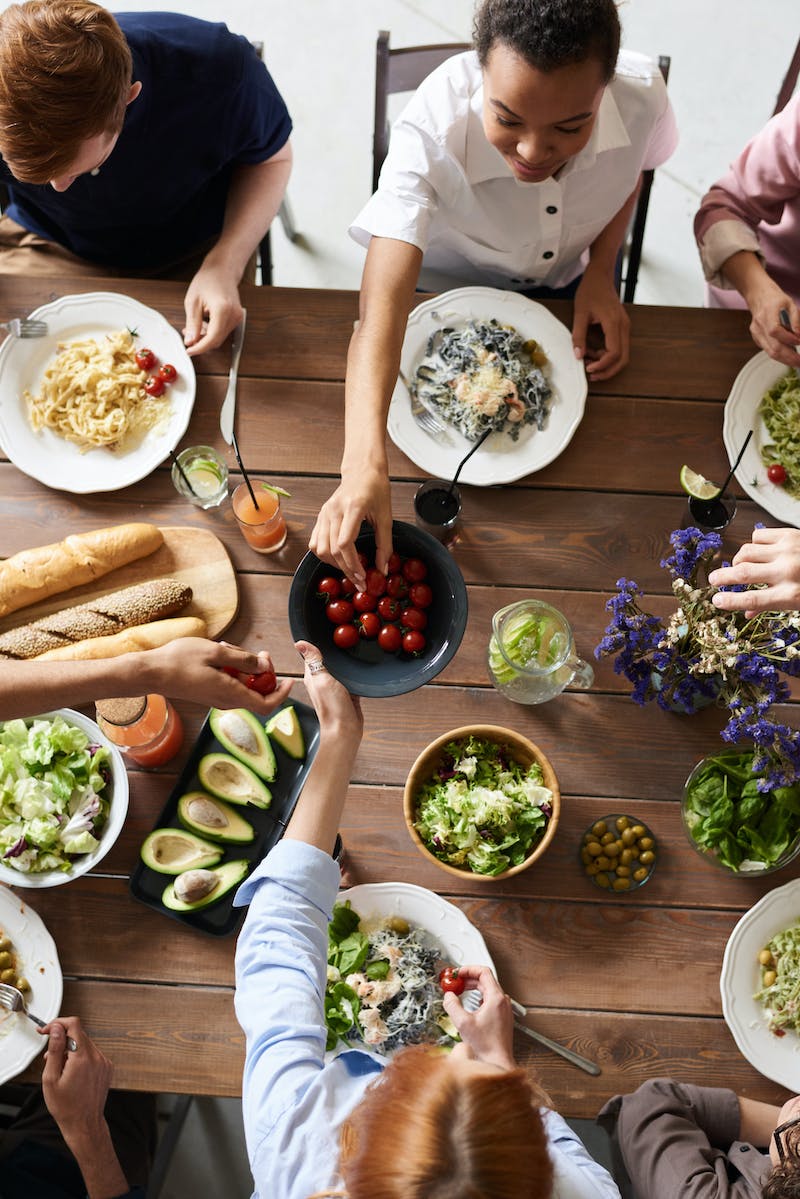Keeping the Feast with a New Book of Poems

Stephen Cushman is Robert C. Taylor Professor in the University of Virginia Department of English. Mr. Cushman has written twelve books, edited five works, and published more than forty articles on topics ranging from poetry to the Bible to the Civil War. He has also received many distinguished teaching awards throughout his career, including the Cavaliers' Distinguished Teaching Professor. In this Thoughts From the Lawn, Mr. Cushman discusses his most recent book and collection of poems, Keep the Feast.
Purple grapes, green grapes in shiny, luscious bunches. White-kernelled walnuts with cracked halves splayed. A pomegranate cleft so each red seed flashes out a tiny sun. Shelled chestnuts, brindled and meaty. Half a juicy orange. Cherries. Blackberries. Oysters on the half-shell, slick in raw sheen.
Details from the throne of Charles Dickens’s Ghost of Christmas Present, beheld by Ebenezer Scrooge in The Christmas Carol? No. All appear in Abraham Mignon’s seventeenth-century painting Still Life with Fruit, Oysters, and a Porcelain Bowl, which hangs in the Rijksmuseum. It also appears on the cover of Keep the Feast: Poems.
What is a feast? Is it simply a hearty meal shared on a special occasion, such as Thanksgiving? Among the ancients, feasts usually went with some kind of religious celebration or observance. A feast might correspond to a personal event, a marriage, or a birth. It might mark a communal success, like a bountiful harvest or deliverance from an enemy. Or it could coincide with a celestial or seasonal occurrence, such as the northward pivot of sunset after the winter solstice.
Today indigenous people of Alaska, Washington, and northwestern Canada still celebrate the potlach, a term from a Chinook word for giving or gift. A potlatch is a feast serving many purposes, among them maintaining spiritual communion with the dead and connection with the supernatural world.
In Exodus, YHWH commands Moses to tell the Israelites, “Thou shalt keep the feast of unleavened bread.” Centuries later, the Apostle Paul urged the small church at Corinth, “Therefore let us keep the feast, not with old leaven, neither with the leaven of malice and wickedness; but with the unleavened bread of sincerity and truth.”

What can such a commandment or exhortation mean to people who feel no particular connection to Exodus, to First Corinthians, or to the feasts of their precursors? What can such a commandment or exhortation mean to people in a country with news flooding in twenty-four hours a day, shopping seven days a week, and business transacted, in person or online, 365.25 days a year? Keep a feast? Observe a festival? Festoon a particular hour or day or week with garlands, literal or figurative? How quaint. How very old school.
The poems of Keep the Feast consider aspects of everyday life as opportunities or occasions for feasting in several senses, as when we speak of feasting our eyes on something. Through its etymological root, “feast” is kin to “festival,” “festive,” “festoon,” “fete,” and “fiesta.” Also to “apotheosis” and “enthusiasm.” Rain. Birds. Buildings. Historical markers. Tomatoes. Shadows. Love. Friends. Phones. Ruined buildings. Feuds with neighbors. Pandemics. Burials. Paintings. Anniversaries. To-do lists. How do these things invite feasting, festivity, festooning, enthusiasm, even apotheosis?
Many of the poems of Keep the Feast talk back to the Bible in a variety of tones. The centerpiece title poem is a sequence based on Psalm 119, longest of the psalms. It explores the challenges of forming and maintaining intimate connection with the divine in an ordinary, everyday, secular world. In doing so, the sequence blends the vernacular with the sacred in the hope of serving a range of readers, believing or not. Like Psalm 119, “Keep the Feast” is an abecedarius, or an alphabetic acrostic. Among the ancients, this alphabetic ordering often served as a spiritual or meditative technique. “Keep the Feast” also follows the rhythmic patterning of ancient Hebrew verse and its typographic formatting in most standard Bibles.
With the loss of an e, a feast becomes a fast. Feasting and fasting appear to be opposites, and if we equate feasting with eating a lot and fasting with eating very little, they are. But originally, the word “fast” pointed to firm adherence to a specific practice, the kind of adherence implied by “steadfast” or “hold fast” or “fasten.” In what way is keeping a feast a kind of holding fast? With so many distractions vying for our attention, and the onslaught of so many stimuli dulling the uniqueness of any particular one, it may be that feast-keeping calls for both celebration and discipline; it may be that celebration itself is a discipline. If so, it is one Keep the Feast tries to practice.
- Stay on Track: Turning Resolutions into Results
- From “Jimmy Who?” to “What Would Jimmy Do?”
- Washington’s Bold Gamble: Christmas Day 1776
- Increasing Your Impact With Planned Giving
- UVA Club of Boston: UVA Men's Basketball Game Watches
- UVA Club of New Mexico: Cavs Care - Roadrunner Food Bank